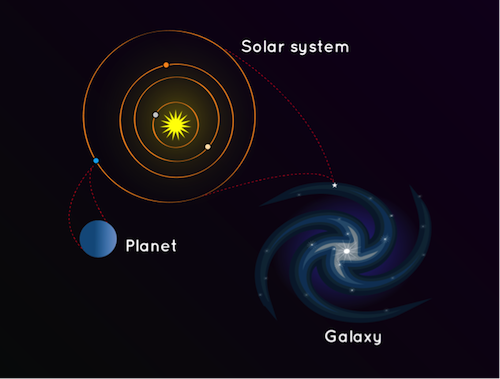Have you ever gazed upon the night sky, mesmerized by the twinkling tapestry of stars? Each of those distant pinpricks of light holds a story, a universe unto itself. But the stars aren't alone. They reside within vast, swirling structures called galaxies, colossal islands of stars, gas, and dust, bound together by gravity's invisible hand. This article embarks on a voyage of discovery, exploring the majestic realm of galaxies, their mesmerizing forms, and their place in the grand narrative of the cosmos.
The Milky Way: Our Celestial Home
Our own solar system, with our sun and its orbiting planets including Earth, resides within a majestic spiral galaxy called the Milky Way. The name "Milky Way" originates from the faint, milky band of light that stretches across the night sky, visible in areas with minimal light pollution. This band of light is formed by the combined glow of countless stars within the galactic plane, the flattened disk where most of the Milky Way's stars and gas reside.
A Universe Teeming with Galaxies
The Milky Way is just one amongst a multitude of galaxies, estimated to number in the hundreds of billions across the vast expanse of the observable universe. Our current technology limits our ability to provide an exact count, but a single deep-space image captured by the Hubble Space Telescope, focused on a tiny speck of the sky, revealed a staggering 10,000 galaxies! This mind-boggling number underscores the sheer immensity and grandeur of the cosmos.
A Dazzling Array of Shapes and Sizes
Galaxies come in a breathtaking array of shapes and sizes. Spiral galaxies, like our Milky Way, are majestic structures with swirling arms emanating from a central bulge. These arms are cradles of star formation, fueled by vast clouds of gas and dust. Elliptical galaxies, in contrast, are smooth and oval-shaped, harboring older stellar populations. Irregular galaxies defy easy categorization, with chaotic and asymmetrical shapes. Each form offers unique insights into the formation and evolution of galaxies.
The Luminous Dance of Galaxies
Galaxies are not static entities. They can interact with each other, their gravitational dance sometimes leading to spectacular collisions. Our Milky Way is destined to collide with our closest galactic neighbor, Andromeda, in a staggering five billion years. However, fear not! Galaxies are so vast that these collisions rarely result in direct impacts between stars or solar systems. Instead, the gravitational tug-of-war can trigger bursts of star formation and reshape the galaxies involved.
Unraveling the Mysteries Within
At the heart of many galaxies lies a supermassive black hole, a region of spacetime with such immense gravity that not even light can escape its clutches. These enigmatic objects are shrouded in mystery, but their presence is believed to play a crucial role in galactic evolution.
A Beacon of Discovery
Our understanding of galaxies continues to evolve with advancements in astronomical technology. Powerful telescopes like Hubble and the James Webb Space Telescope pierce the veil of darkness, revealing galaxies in unprecedented detail. These observations allow us to trace the history of galaxies, witness the birth and death of stars, and unravel the secrets of the universe's grand design.
The Quest for Life Beyond
The existence of galaxies beyond our own naturally ignites curiosity about the potential for life elsewhere in the universe. With billions of galaxies, each harboring billions of stars, the odds of Earth being the only planet harboring life seem to diminish. The search for exoplanets, planets orbiting stars outside our solar system, is a burgeoning field of astronomy, and the discovery of potentially habitable worlds continues to fuel our search for extraterrestrial life.
Tags:
Cosmology

